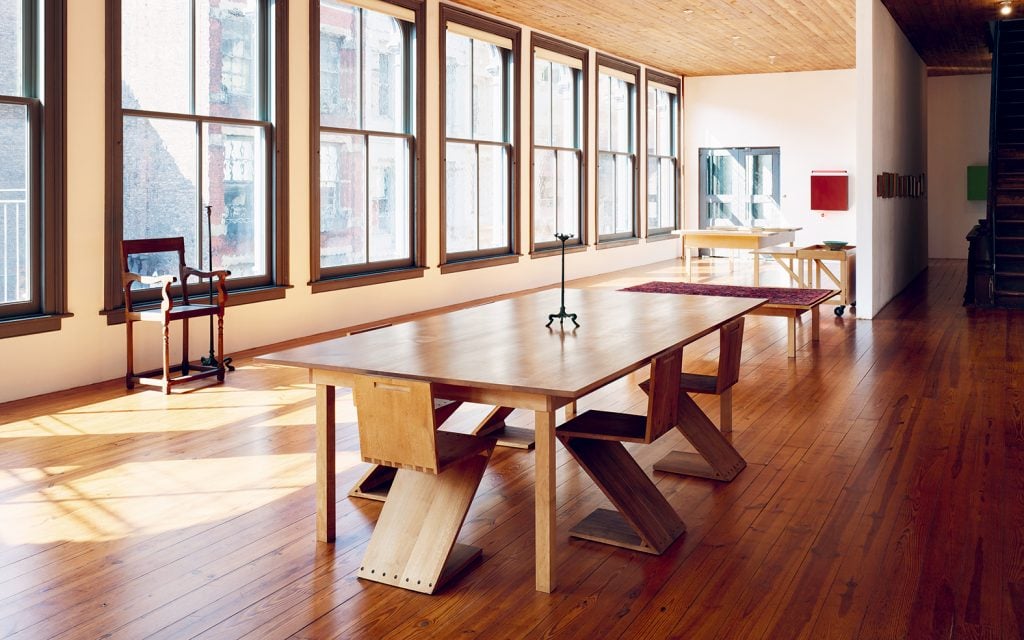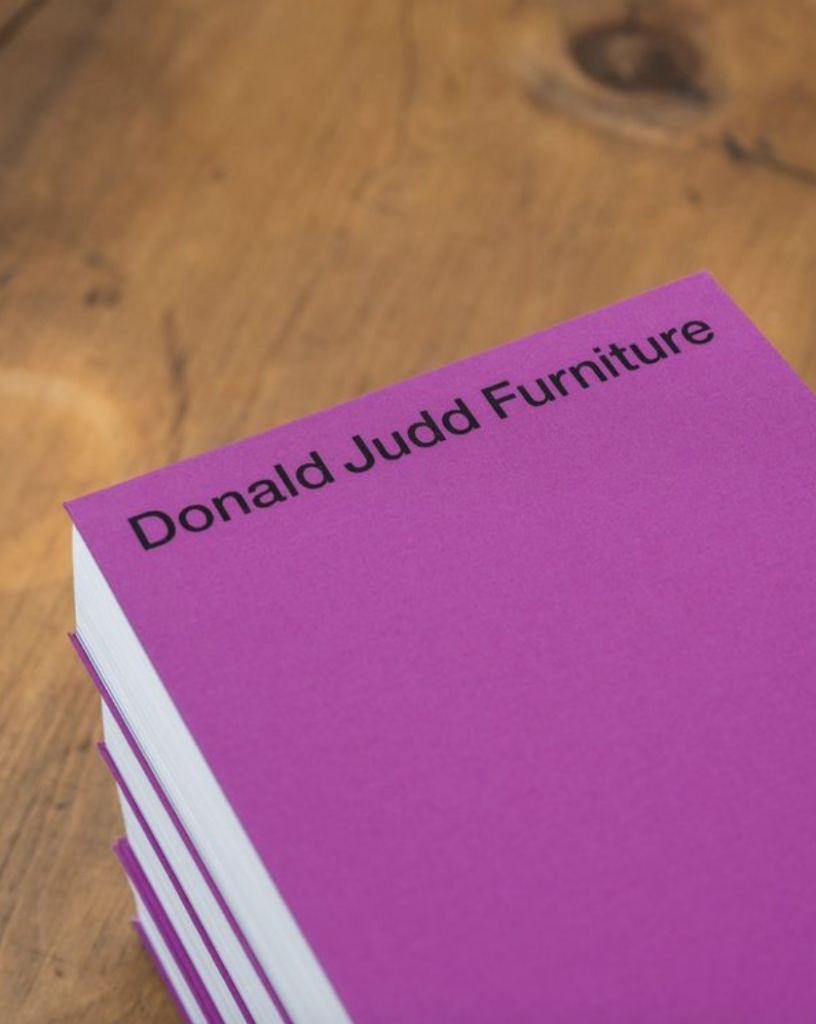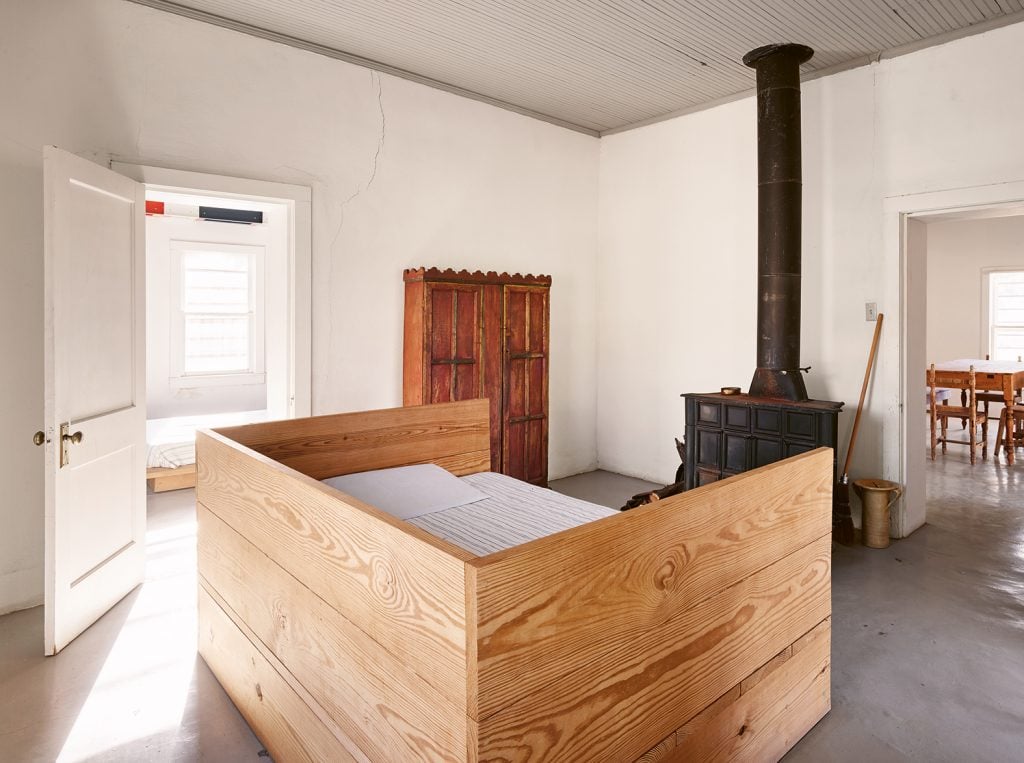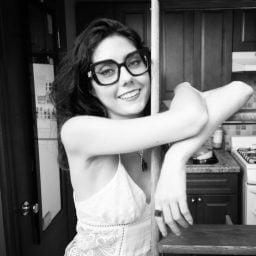Books
Here’s the Definitive Volume on Donald Judd’s Minimalist Furniture Designs
The Judd Foundation's first book on the artist's furniture features his greatest hits and deep cuts alike.

Donald Judd’s furniture has become such a hot commodity that even Kim Kardashian fudged the truth to get in on the excitement. As such, the Judd Foundation has partnered with Mack Books on Donald Judd Furniture, their first publication dedicated to the acclaimed minimalist’s design practice—which Judd considered wholly distinct from his prints, paintings, and sculptures. Judd’s daughter Rainer edited the 448-page tome, which spans archival photographs and newly commissioned elevation and perspective sketches, as well as the artist’s own words on his furniture.
All 104 chairs, shelves, benches, and beds presented throughout these pages are still in production, and hail from 1970 through 1991, thus illustrating the evolution of Judd’s furniture practice, which grew beyond fulfilling his own needs to meeting those of the market’s.
Judd fashioned his first piece, Fifth Floor Bed 3 (1970), for the top level of his Spring Street home in SoHo, New York, which he’d purchased two years before. By then, Judd had established himself as a leading creative voice—both through his iconic minimalist “stacks” and “boxes” series, and through his eloquent art criticism. His elegant and utilitarian first bed frame even offered built-in light switches and electrical sockets.

Donald Judd Furniture (Judd Foundation and Mack, 2024). Photo Charlie Rubin © Judd Foundation. Courtesy Judd Foundation.
In 1971, Judd and his family, including young Rainer and her brother Flavin, moved to their Marfa home, La Mansana de Chinati, where the artist’s furniture practice exploded out of necessity. As Judd recounted in a 1992 interview and his 1993 essay, “It’s Hard To Find A Good Lamp”—both featured in Donald Judd Furniture—he had to build the furniture for their new home on the outskirts of town, since sleepy little Marfa didn’t have any good shops.
Although Judd’s designs from this era are available at high prices today, he didn’t design furniture explicitly for the purpose of selling until his collaboration with the Swiss firm Lehni AG in 1984.

Narrow Frame Stool, La Mansana de Chinati, Marfa, Texas, from Donald Judd Furniture (2024) published by
Judd Foundation and Mack. William Jess Laird © Judd Foundation. Courtesy of Judd Foundation and Mack.
What’s more, the extensive furniture creations across Donald Judd Furniture aren’t presented in a strictly chronological order. Instead, they’re grouped by what they’re made of—an appropriate choice for the material-driven artist—starting with one-by-twelve boards of eight different woods from black walnut to cedar, then progressing through Judd’s designs in two-by-twelves, wood frame, plywood, sheet metal, and steel frames. Highlights include Fifth Floor Bed 3, of course, alongside La Mansana Table 22 (1982), which Judd designed for al fresco enjoyment at his family’s Marfa home.
Only three editions of Judd’s $90,000 made-to-order table have been commissioned over the past 15 years, but its accompanying Chair 84 (1983), which comes in 10 varieties and goes for $9,000 a pop, has become a bestseller.

Two-by-Twelves furniture (including Library Bed) at Casa Perez, Presidio Country, Texas, from Donald Judd Furniture (2024) published by Judd Foundation and Mack. Matthew Millman © Judd Foundation. Courtesy of Judd Foundation and Mack.
Additional standouts in the book include the ultra-inviting Library Bed 15 (1979), originally rendered in pine for Judd’s library in Marfa, and the La Mansana Bench 39 (1984), a generous outdoor seating nook with three sides to lean against, which also offers an ample, movable table within its bounds.
Two essays by the artist and an interview follow, as well as a helpful timeline, a guide to locations pictured throughout the book, and three specialized indexes.
Donald Judd Furniture is now available from the Judd Foundation and Mack Books.





